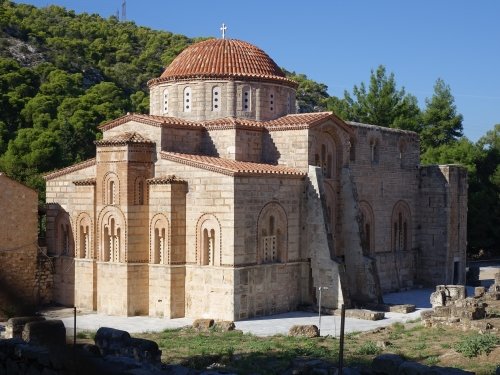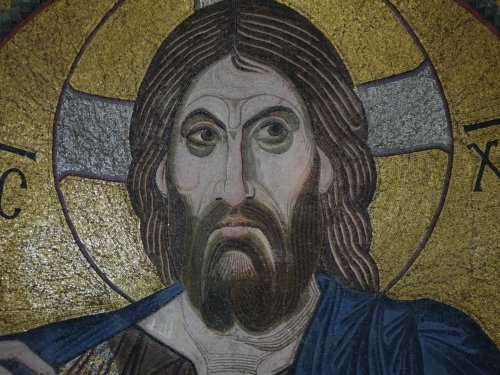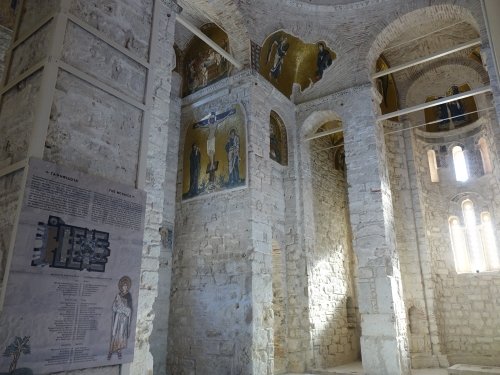Els Slots
Whs #682: Daphni Monastery
The Monastery of Daphni is part of the WHS Monasteries of Daphni, Osios Loukas and Nea Moni . All these 3 medieval Greek monasteries contain gold-coloured mosaics that are valued as masterpieces of Byzantine art. The monastery of Daphni, located just outside Athens, is an easy one to access and that’s the one I choose for my visit too. It took about 45 minutes to see it all & even combined with a return trip from and to Athens city center it costs less than 2 hours of your time.

Together with a Russian couple that also wanted to visit Daphni, I left the city bus in a suburb of Athens. Many buses will stop near the monastery, see the official website for the range of bus lines. I used a one-day Ath.ena ticket to pay, it covers the metro rides as well. It was somewhat of a search for the entrance, but then we were faced with a heavily secured monument. Access is prevented by a large iron gate and a high fence that fully encircles the former monastery. Would it still be closed today (= Friday)? No: it turned out that you can ring a bell and then the gate will open automatically.
They have been restoring this world heritage since 1999. It is almost finished, but not yet completely - hence the limited opening times (Tuesdays and Fridays) and free entrance. Workers are busy still on the excavations outside of the main church. We were kindly welcomed though to have a look everywhere and take pictures. It all looks a bit 'new'. From the outside, especially the windows of the church stand out. They are decorated like a kind of traffic light: 3 circles in a vertical row. The columns that carry the roof of the narthex are almost all replicas: Lord Elgin took the originals along with the frieze of the Parthenon to England, where they now catch dust in the cellars of the British Museum . One original Ionic column is still left: it was reused from the Apollo sanctuary that stood on this spot in Antiquity (and therefore qualifies as spolia I guess).

On the inside the church is very bright, both because of the use of white limestone and the many windows. Many gold-coloured mosaics can be found on the ceiling and on the upper parts of the walls. Lower to the ground, the walls have wall paintings of a later date. The mosaics are the distinctive feature of this monastery church. They exclusively depict biblical scenes. The usual set of prophets, Mary with the child Jesus, the archangels, life and death of Christ and the life of Mary can be seen. There is an information panel in the church which explains which mosaic represents what scene. The mosaics have a bright-golden background; the colour is so bright because it also incorporates glass. The makers of the mosaics probably came from Constantinople. It is unknown who the sponsors were of this richly decorated building.

Since 1821, the monastery no longer has a religious function and from 1888 on it was in fact already a historical monument. Nowadays, certainly after the renovation is over, the delicate church is a fine destination for a short detour from the Athens monuments.
More on
Els SlotsComments
No comments yet.
